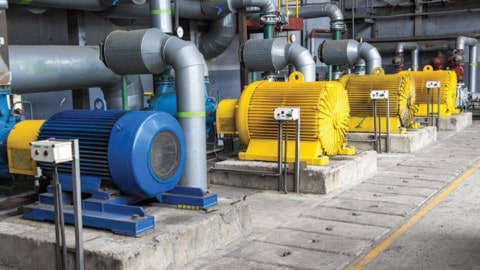This year, farmers in Gippsland were lucky enough to experience a winter that provided enough rainfall to meet plant requirements. The arrival of spring along with an increase in temperature, wind speed and evaporation rate, leads to the need to irrigate.
Starting up irrigation at the right time, and doing system checks to make sure you are ready for the season will maximise the amount of pasture or crop you can grow and reduce the chance of breakdowns during the season.
Agriculture Victoria has provided some general pointers to help you ensure your readiness for irrigation.
Surface irrigation
Farmers with surface irrigation systems can take several steps to make sure their systems are working efficiently.
The first and most important step is to remove vegetation, silt or other blockages from channels and drains to make sure irrigation water flows well with minimum head loss.
Anything in your channels or drains that causes head loss slows down the flow of water and increases the chance of waterlogging or losing water to deep drainage, depending on your soil type.
Heavier soils will show waterlogging issues, such as reduced pasture growth and quality, while lighter soils will lose a lot of water to deep drainage. Ensuring water flows on and off the bay as fast as possible is key to efficient surface irrigation.
Another important step is to check your outlets for any damage that has occurred in the off season and repair any outlets that you know have leaks or other issues.
You also need to check that your reuse pump, should you have one, is running efficiently, and has been serviced and maintained appropriately.
Centre pivots and linear moves
If you’re an irrigator with centre pivot or linear move systems, the first step is to check your sprinkler chart and ensure the sprinkler package matches the chart and your machine.
It is recommended that sprinkler and regulator packages be replaced every 10,000 hours at a minimum. Sprinklers account for over 70 per cent of your system’s performance, so it is vital to get this part of your machine right.
While you are there, turn the machine on and inspect it for any broken or leaking sprinklers, and make sure your end gun and booster pump, if you have one, turns on and off in the correct places.
At this stage, checking the pressure at the pump that supplies the system is also important to ensure the entire machine can run at the correct pressure. If the pressure is too high it will waste energy and money, while lower pressure than recommended will decrease the uniformity of the system.
While the machine is running, measure the system water pressure with a pressure gauge at the second span, middle span, and last sprinkler. This will help ensure the system is running at the correct pressure to supply the spans and the end gun or will highlight pressure problems that need to be corrected.
A useful tip is to also check the tyre pressures; tyres that are too highly inflated can exacerbate wheel tracking, whereas low pressure can increase resistance and in extreme cases the tyre can come off the rim.
It’s also a good time to check if your pump is running efficiently and has received appropriate servicing and maintenance.
If you are pumping from a river or on-farm storage that contains solid trash such as sticks, leaves, or large amounts of sediment, consider a screen on the suction to decrease the amount of litter entering the pivot and potentially blocking the sprinklers.
Fixed sprays/bike shift laterals
Irrigators with fixed or lateral sprays need to ensure their pumps are operational and supplying the correct pressure for their spray systems.
Higher pressure than what is needed will waste energy and money, while lower pressure than recommended will decrease the uniformity of the system. Regular maintenance and servicing of pumps can more than pay for itself, ensuring correct functioning and preventing breakdowns.
The next step is to check all visible infrastructure (lines, hydrants, posts, sprinklers) for damage or leaks, and unblock any sprinklers that are clogged.
These tips can help you make the most of your irrigation system and season.
A well-functioning system and correct scheduling of irrigations will set you up for efficient and optimal pasture production.

















